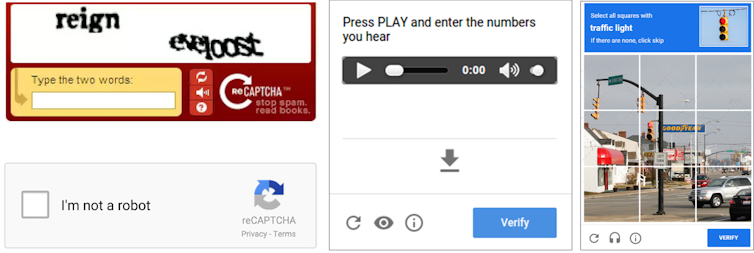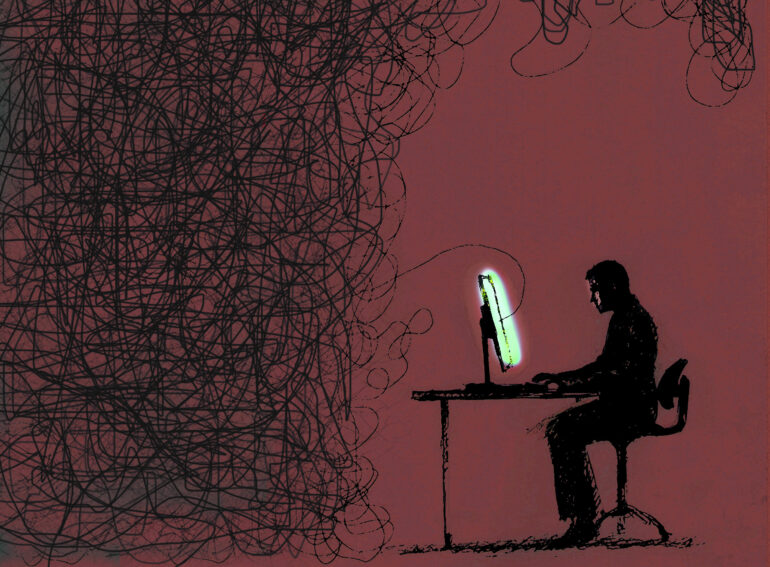CAPTCHAs are those now ubiquitous challenges you encounter to prove that you’re a human and not a bot when you go to log in to many websites.
Websites and mobile apps have long been attacked by bots on a massive scale. Those malicious bots are programmed to automatically consume a large amount of computing resources, post spam messages, collect data from websites and even register and perform user authentication. This state of affairs led to the introduction of CAPTCHA, which stands for Completely Automated Public Turing test to tell Computers and Humans Apart.
As a computer scientist, I see CAPTCHAs as an effective shield for websites to prevent automated attacks, enhance cybersecurity and improve user experience – at least in the short term. For example, denial-of-service attacks create a bottleneck and cause a web server to become overloaded and unresponsive. CAPTCHAs help stop automated bots from executing such denial-of-service attacks and even fraudulent activities such as sending spam messages and creating fake accounts.
Meanwhile, financial institutions rely on CAPTCHAs to protect against bots trying to steal clients’ data. Additionally, CAPTCHAs improve the integrity of online voting and polls by preventing automated bots from manipulating results.
How CAPTCHAs work
CAPTCHAs are designed to show questions or challenges that are easy for humans but difficult for computer bots to answer. In practice, there are several types of CAPTCHAs: text-based, image-based, audio-based and behavior-based.
Text-based CAPTCHAs have been very popular since the early days of the internet. This CAPTCHA type requires users to read a distorted and complicated image of text and enter the answer into a text field. A variant of text-based CAPTCHA asks users to solve simple math problems like “18+5” or “23-7.” However, it was recently solved by advanced optical character recognition algorithms, thanks to the proliferation of deep-learning AIs.

CAPTCHAs come in text, audio and image forms.
Screencaptures by Tam Nguyen
When the text is tuned to be more distorted and more complicated, actual humans ironically fail to provide a correct answer.
Audio CAPTCHA plays a short audio clip containing a series of numbers or letters spoken by a human or synthetic voice, which the user listens to and then types into a provided text field. The input is verified against the correct answer to determine whether the user is human. Like text-based CAPTCHAs, audio CAPTCHA can be difficult for humans to interpret due to factors such as background noise, poor audio quality, heavy distortion and unfamiliar accents.
Image-based CAPTCHAs were introduced to make it more challenging for bots. Users must identify specific objects from images – for example, selecting all image blocks containing traffic lights. This task leverages human visual perception, which is still superior to most computer vision-based bots….



